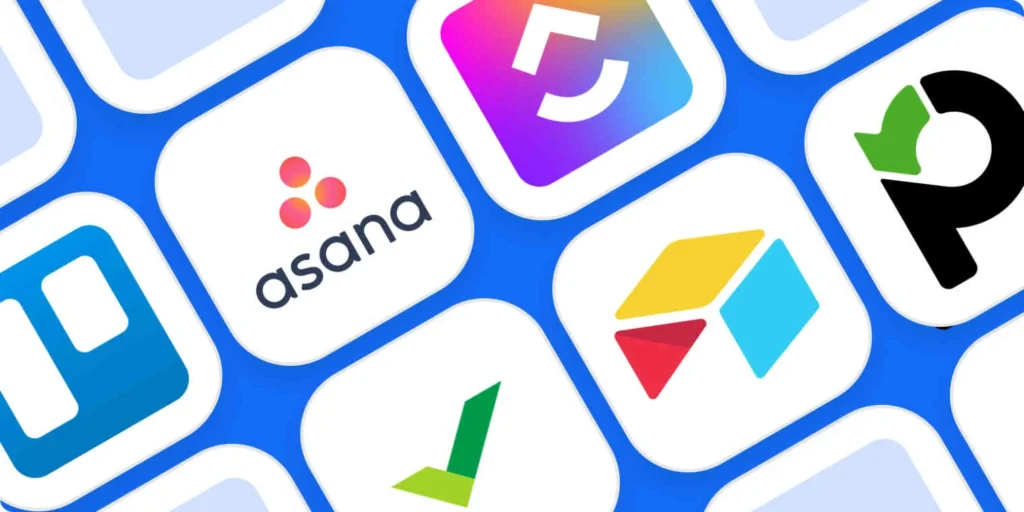Time functions as an essential asset in every project. The main reason for project managers and teams having difficulty managing time emerges from their practice of inadequate workflow methods. Workflow optimization becomes more important every day because of the quick technological development of project management tools and task and project management software. People need to start 2025 by finding and removing time-wasting habits along with inefficient practices in their daily work.
In this blog, we’ll explore what project management habits are, and highlight five ineffective habits you should eliminate to improve productivity. We will also discuss how using the best project management tools can help streamline workflows and enhance overall efficiency.
What Are Project Management Habits?
The project management lifecycle welcomes recurring habits among project managers and their teams to achieve execution goals. The adopted behaviours of project management teams consistently influence both project conclusions along with workforce spirit as well as work effectiveness. Project accomplishments depend on three positive habits which include clear communication and proactive planning as well as effective risk management. Project failure together with budget overruns and delayed timelines emerge from negative habits like poor time management while inadequate delegation and lack of monitoring. Project management success comes from developing positive project behaviors and discarding bad ones so managers achieve superior results on every project.
5 Project Management Habits to Stop Wasting Time in 2025
1. Relying on Outdated or Manual Tracking Methods
Many teams still use spreadsheets, emails, or even paper-based tracking systems to manage projects. These methods are slow, prone to errors, and make it difficult to collaborate effectively.
Solution: Management software based on modern task and project features allows users to track progress automatically while task assignment happens instantly and provides real-time performance updates. The task management software Trello Asana and Monday.com enables smooth teamwork while providing better display of ongoing workflows. Through these platforms users gain access to dashboard systems which track deadlines along with task completion ratios and project achievement targets thus working toward improved efficiency in project tracking.
Example:
A marketing team handling a product launch used Excel to track campaign progress. Shifting to Monday.com allowed real-time updates and automated reminders, improving efficiency and reducing errors.
2. Holding Unnecessary or Unstructured Meetings
Meetings are essential for team alignment, but too many or poorly planned meetings waste valuable time. A lack of a clear agenda, lengthy discussions, and lack of action items often make meetings inefficient.
Solution: Schedule only necessary meetings and set a clear agenda. Utilize project management tools that offer real-time communication, such as Slack or Microsoft Teams, to reduce dependency on meetings for minor updates. Asynchronous communication, such as shared progress updates and recorded presentations, can replace unnecessary meetings.
Example:
A software development team reduced their daily stand-ups from 30 minutes to 10 minutes by using Slack for minor updates and Asana for task tracking, allowing engineers to focus on coding instead of unnecessary discussions.
3. Poor Task Delegation and Role Confusion
If team members are unclear about their responsibilities, it leads to miscommunication, overlapping efforts, and wasted time. This issue often arises when roles are not well-defined at the beginning of the project.
Solution: Managers must use best project management tools including ClickUp or Wrike to establish clear job definitions and responsibilities. Through best project management tools like ClickUp or Wrike managers gain the ability to effortlessly assign tasks along with priority setting and progress tracking to provide clear understanding of responsibilities for all team members.
Example:
A construction company assigned specific project phases in Wrike, reducing confusion and ensuring each team member had clear deliverables, which improved project completion speed by 20%.
4. Failing to Set Clear Goals and Priorities
Without clear objectives, teams may waste time working on less critical tasks while neglecting high-priority activities. This lack of focus can delay project completion.
Solution: The definition of project objectives needs SMART goals with Specific, Measurable, Achievable, Relevant, Time-bound criteria. Notion and Jira represent task and project management software tools that facilitate task priority setting and maintenance of team work toward project targets.
Example:
A digital marketing agency used Notion to create a content calendar, assigning deadlines based on priority levels, which increased on-time content delivery by 30%.
5. Ignoring Automation and Integration
Many project teams manually update status reports, send follow-up emails, and track progress using multiple disconnected tools. This manual effort consumes time and increases the risk of errors.
Solution: Project management tools should be optimized by implementing their automated functionality. Users can leverage Zoho Projects and Smartsheet to automate status reporting and scheduling of reports as well as task notification functions. Other business applications can integrate with Google Workspace and Slack through improved efficiency measures.
Example:
A finance team integrated Smartsheet with their accounting software, automatically generating reports, reducing manual data entry by 50%, and increasing productivity.
Conclusion
Breaking inefficient project management habits is key to improving productivity and meeting deadlines in 2025. By adopting modern task and project management software, eliminating outdated tracking methods, reducing unnecessary meetings, ensuring clear delegation, setting precise goals, and utilizing automation, teams can work more effectively.
Choosing the best project management tools tailored to your team’s needs will not only save time but also enhance collaboration and project success. Make 2025 the year of efficiency by stopping these time-wasting habits and embracing smarter project management’s practices.
By implementing these strategies, businesses can expect improved workflows, better team coordination, and ultimately, more successful project outcomes. Let go of inefficiencies and step into 2025 with a fresh, more productive approach to project management’s.







